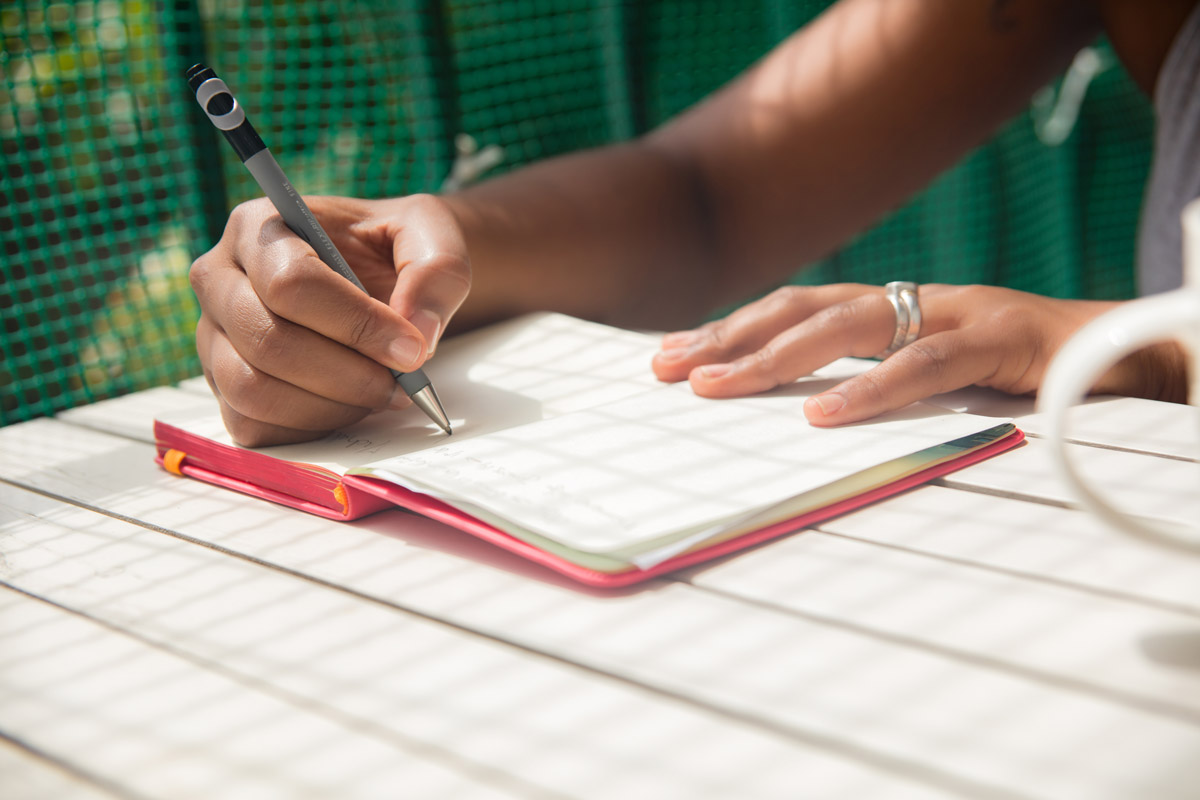
Photograph by Hispanolistic/Getty Images
Scientific studies have proven that journaling helps manage anxiety and stress. For starters, the physical process of recording your thoughts helps you stay present and evokes mindfulness.
Journaling also helps you organize tasks and challenges that can otherwise feel overwhelming. The simple act of writing down your thoughts makes them tangible and less abstract. Then, you can prioritize and tackle issues or emotions one by one.
Recording your reactions to events helps you identify causes of stress or anxiety. As you review entries, you start to see patterns and symptoms. With those indicators identified, you can work through a plan to proactively avoid aggravation and better resolve issues as they occur—and nurture patterns of growth and positive change.
The beauty of this practice is that it fits every budget, and you can approach it in the way that best fits your lifestyle.
Although there is evidence that daily journaling is most beneficial, don’t feel obligated to write every day—write whenever you feel the need or whenever it is convenient. A journal should be private, so don’t worry about handwriting or spelling or how to express your ideas. Your journal is meant to be a safe place, free from judgment, to explore your thoughts and emotions.
Picking out a journal that encourages you to write is key. You can grab an old composition notebook or buy a new leather-bound journal. Do you prefer college-ruled or wide-ruled paper? Or maybe you’d like to sketch on blank pages? Perhaps you are best suited to typing on your computer. If you start one way and find it is uncomfortable, try another before dismissing the practice.
What you write will vary by the day and your mood. The goal is to capture what is important to you at that moment. Writing first thing in the morning allows you to set your intention for the day, while writing in the evening is an ideal way to download the day’s events and limit anxieties that may keep you up at night. And you should never feel compelled to write about an issue if you aren’t ready.
There is no one way to start. The goal is to right-size this practice for you so that journaling can become a consistent part of your self-care routine.
Writing exercises:
A Gratitude List is composed of people and things in your life for which you are grateful and why you are appreciative. Write as few as five things, but the longer the list, the more impactful the experience. The exercise shifts your mind into a positive frame.
Scripting is a powerful manifesting exercise. Write a journal entry about a day in your life in the future when you’ve accomplished a particular goal (a new home, a dream job, a desired relationship), but write the entry in first person, present tense. The goal is not to dwell on something you don’t have, but to write as if you are grateful that it has already happened—which helps you recognize that change is possible.
The Cathartic Letter is an opportunity to provide closure to a situation that is unresolved. Write a letter to someone from your past who has hurt or upset you. Write out all the things you’ve left unsaid, without fear of repercussion. Be honest and admit your hurt or vulnerability or anger. If it helps provide closure, tear up or burn the letter after you’ve finished writing.
Simone Adams is a writing coach who facilitates journaling workshops.
Back to “How to Find Calm in a Year of Chaos”
This article appears in our November 2020 issue.













